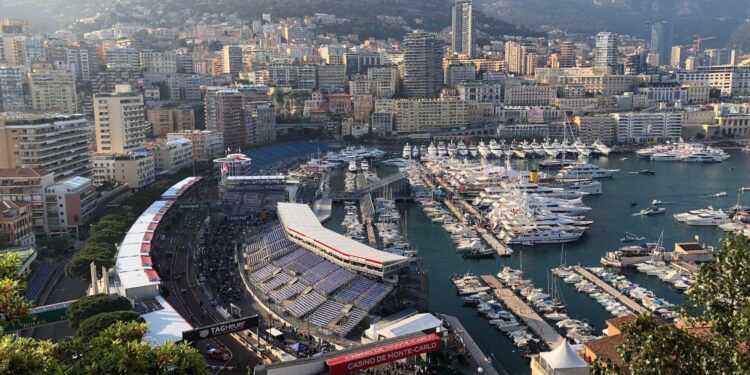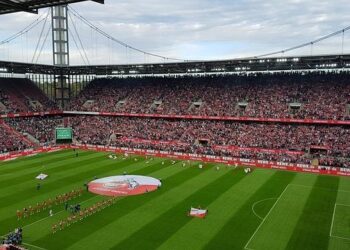The Monaco Grand Prix stands as Formula 1’s most iconic and challenging race, a high-stakes contest where precision meets peril on the narrow streets of Monte Carlo. As the crown jewel of the F1 calendar, the Monaco GP combines a rich historical legacy with a uniquely demanding track layout that tests the skill and courage of the world’s best drivers. This article provides a detailed breakdown of the Monaco circuit, exploring the intricacies that make it a favorite among fans and a formidable challenge in the modern era of Grand Prix racing.
Monaco GP Track’s Unique Challenges Demand Unmatched Driver Precision
Navigating the streets of Monaco requires far more than mere speed; it demands razor-sharp focus and impeccable control. The winding circuit, with its unforgiving barriers and narrow lanes, leaves virtually no margin for error. Drivers must master a series of acute corners and elevation changes, where even the slightest miscalculation results in lost time-or worse, a race-ending collision. Precision braking and carefully measured throttle application transform this historic track into a chessboard of tactical prowess, where milliseconds count and every corner tells a story of skill and nerve.
Several aspects set Monaco apart from the rest of the F1 calendar:
- Ultra-tight hairpins: The iconic Grand Hotel Hairpin demands near-impossible downshifts and supreme steering finesse.
- Limited overtaking opportunities: Positioning and qualifying become paramount, adding pressure on drivers to execute flawless laps.
- Close proximity to barriers: The unforgiving guardrails punish any slight mistake, heightening the stakes on every maneuver.
| Track Section | Challenge | Driver Impact |
|---|---|---|
| La Rascasse | Tight corner with low speed | High risk of losing time or spinning |
| Mirabeau Haute | Sharp left with elevation change | Demands precise throttle and brake balance |
| Tabac | Fast right-hand bend | Tests car stability and driver nerve |
Historic Corners Shape Race Strategy and Heighten On-Track Drama
Monaco’s circuit is a masterclass in how history shapes contemporary racing tactics, with its legendary corners dictating much of the weekend’s unfolding drama. Tight bends like the Mirabeau and the Fairmont Hairpin demand not only fearless precision but also impeccable tire management. Drivers must calculate every inch they can gain without risking contact with unforgiving barriers-a balance that has turned these corners into some of F1’s most iconic and perilous passages. Overtaking opportunities are scarce, so teams often gamble on strategic calls during these crucial sections, using pit stops and tire degradation as weapons to leapfrog rivals under pressure.
- Mirabeau: A deceptively slow curve where timing and braking precision are critical.
- Fairmont Hairpin: The slowest corner on the calendar, forcing drivers into tactical battles during restarts and defensive moves.
- La Rascasse: A corner that epitomizes Monaco’s unforgiving nature-going wide means losing precious seconds or crashing.
| Corner | Impact on Strategy | Risk Level |
|---|---|---|
| Mirabeau | Braking challenge, tire wear hotspot | High |
| Fairmont Hairpin | Key overtaking/defensive zone | Very High |
| La Rascasse | Precision critical, penalty prone | Extreme |
Expert Tips for Navigating Monaco’s Tight Turns and Maximizing Qualifying Performance
Precision steering and flawless timing are non-negotiable when attacking Monaco’s notoriously narrow and sinuous circuit. Drivers must approach every corner with razor-sharp focus, particularly through iconic sections like the Fairmont Hairpin and the Swimming Pool complex. Mastering the throttle and brake balance here is crucial; too much aggression risks costly wall contact, while excessive caution costs precious tenths. Experts advise harnessing the track’s unique grip levels by progressively building speed through each lap during qualifying, allowing the tires to come up to optimal temperature and delivering those decisive milliseconds.
Key strategies to sharpen your Monaco qualifying pace:
- Maximize track time during out-laps: Clear traffic and competitive tire warm-up can set the tone for a fast flying lap.
- Precision over bravery: Prioritize clean, controlled lines in tight corners over aggressive overtaking moves in qualifying.
- Use of slipstream: Leverage narrow straights by following closely behind competitors to gain crucial extra speed down the tunnel.
- Adaptive braking zones: Adjust braking points lap by lap, accounting for track evolution and street conditions.
| Corner | Max Speed (km/h) | Best Gear | Key Driver Tip |
|---|---|---|---|
| Ste Devote | 65 | 2nd | Early braking, smooth turn-in |
| Grand Hotel Hairpin | 46 | 1st | Use full curb, avoid wheelspin |
| Mirabeau | 120 | 4th | Carry mid-corner speed |
| Tabac | 180 | 6th | Stay tight, late apex |
Concluding Remarks
As the Formula 1 circus returns each year to the streets of Monte Carlo, the Monaco Grand Prix remains a testament to the enduring allure of high-speed drama woven into a tapestry of rich history. Balancing the razor’s edge between risk and precision, the iconic harbor-side circuit continues to challenge drivers and captivate fans worldwide. Beyond its tight corners and unforgiving barriers, Monaco’s crown jewel status is secured not only by its unique demands but also by the storied legacy that has shaped motorsport for nearly a century. In the ever-evolving landscape of Formula 1, the Monaco GP stands as a timeless reminder of the sport’s most thrilling blend of danger, skill, and glamour.
















